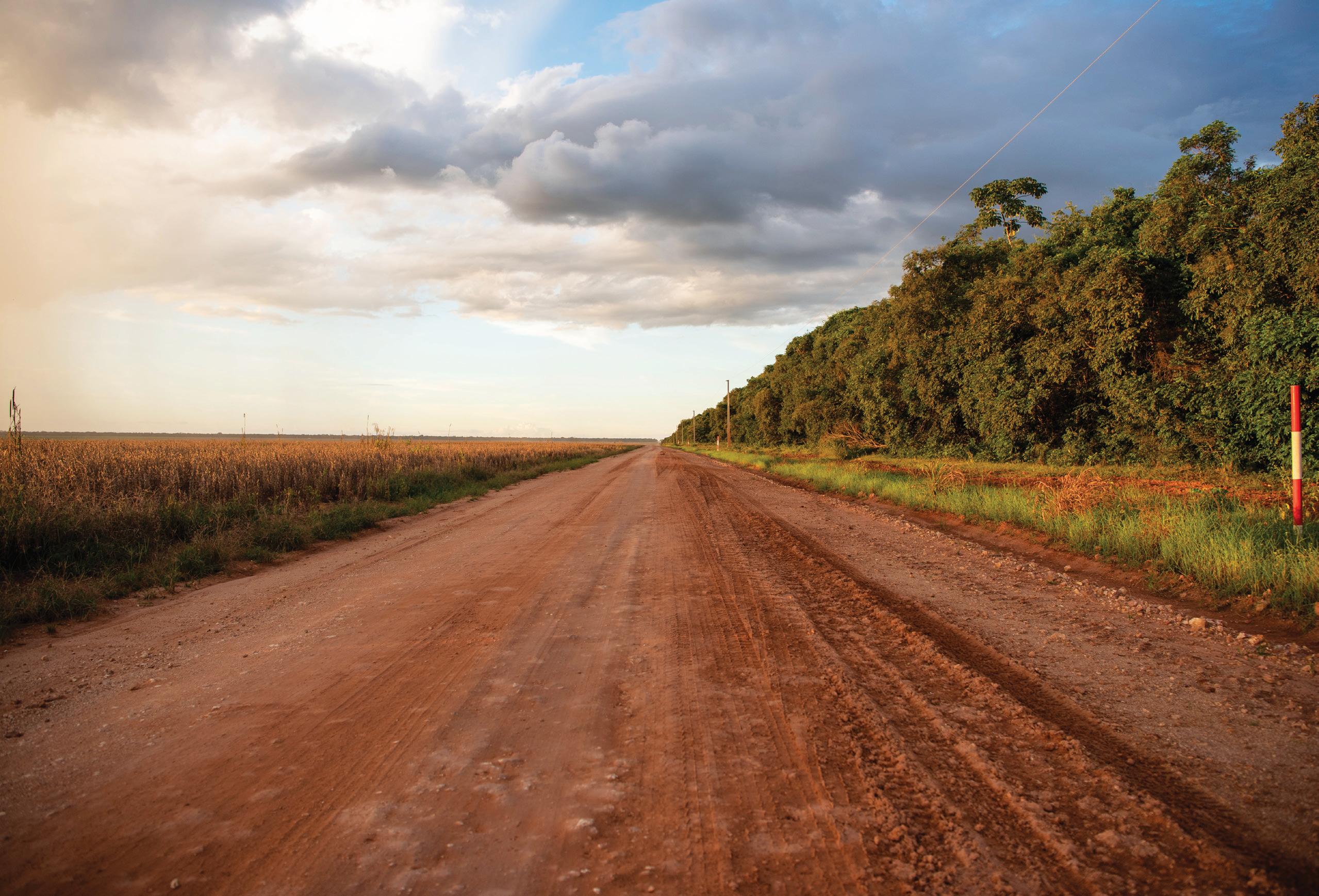
3 minute read
20 years at Tanguro Field Station
Sarah Ruiz, Science Writer and Editor
For two decades, this research station has stood at the southern edge of the Amazon rainforest as a perfect natural laboratory to study the changing biome
Introduction
The sky opens up just as our truck leaves the last stretch of paved road. Water Program Director Dr. Marcia Macedo squints to stay focused on what she can see between wipes of the windshield. Within minutes, our path is transformed from a dirt road into a riverbed of bright orange mud, rutted from the passing of heavy trucks carrying soy off surrounding farms. Macedo swerves to dodge bumps and dips, but pretty soon there are more of them than there is flat road. We brace for the puddles, peering out windows spattered with orange spray.
It’s a Monday morning in the rainy season at the edge of the Amazon, and we’re commuting to work.
Tanguro Field Station lies about an hour’s drive from Canarana, the nearest town, located in a region of Brazil sometimes referred to as the arc of deforestation. Several decades ago, agriculture began surging into the southern reaches of the Amazon rainforest here, carving out rectangular patches of farmland from primary forest. For most of our drive, we are flanked only by mega-fields of soybean or scrubby cattle pastures.
Macedo, who has been conducting research at Tanguro since 2007, remembers a time when the drive could be marked by crossing a threshold from the Cerrado—Brazil’s woody savanna biome—into the Amazon. Now, clearing near the road has obscured that natural transition. Eventually though, clumps of lush green loom closer out of the rain and we know we’re nearly there.
Since its founding in 2004, Tanguro has offered researchers from around the world the opportunity to investigate big questions about how climate change and deforestation are affecting the Amazon. Macedo and her team have come to study Tanguro’s streams and reservoirs.
We pull to a stop outside the research station, hauling suitcases wrapped in plastic trash bags out of the truck bed. Research Assistant Zoë Dietrich clutches several vital electronic components to her chest, ferrying them to a screened-in porch to keep them out of the rain. Postdoctoral researcher Dr. Abra Atwood starts digging out sediment core tubes from a pile of equipment. The clouds drift off and the work day at Tanguro begins.
Read the full story at: woodwellclimate.org/20-years-at-tanguro-field-station
header image: A road running between forest and field at Tanguro. / photo by Mitch Korolev



